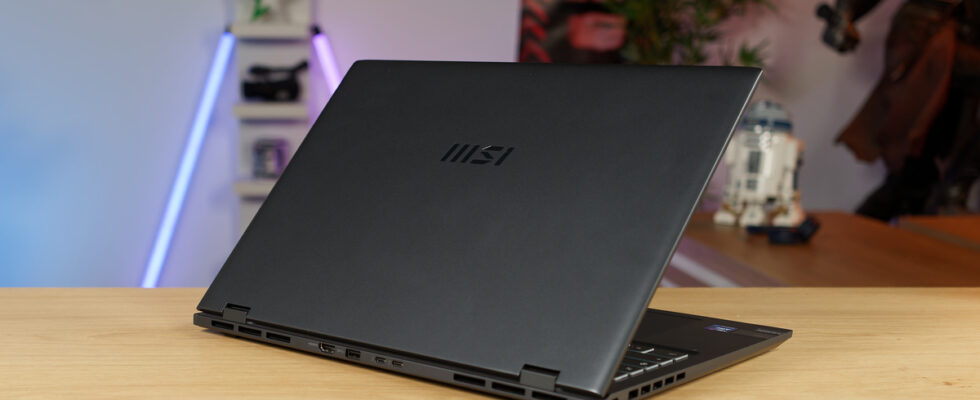MSI Prestige 16 AI Evo (Core Ultra 7)
Introductory price €1799

LDLC
€1,808.90Nine

Material.net
€1,808.90Nine
How the pricing table works
Turn off your ad blocker to access all of the links above.
Framework Laptop 13 (Ryzen 7 7840U)

Note The Digitals

In the absence of offers discover
The links shown above may not work if an ad blocker is used.
Intel’s Core Ultra processors feature a brand new architecture: Meteor Lake, specially designed for laptop PCs. This aims for energy efficiency with varying degrees of success, as we have already mentioned. But another new feature has been less talked about: the Intel Arc graphics part, which is not devoid of qualities, quite the contrary.
Summary of Intel Arc features. © Les Numériques
The Intel Arc integrated into Meteor Lake processors features 8 Xe-LPG cores from desktop graphics cards. On paper, this new graphics part is twice as efficient as the Iris Xe, but also twice as efficient. It should be remembered that the Intel Arc is engraved at TSMC via the N5 process, while the Iris AV1 encoding and decoding, in-house XeSS upscaling technology and up to four displays.
A real leap forward
Score in benchmarks (higher is better). © Les Numériques
According to our synthetic benchmarks which measure the capabilities of the Intel Arc GPU, the announced leap forward is there. Thus, the 3DMark score almost doubles compared to the Iris Xe; the OpenCL and Vulkan scores in GeekBench 5.4 are not far behind, with a gain of 68% for the OpenCL API and 83% under Vulkan.
Faced with AMD’s Radeon 780M, which equips the Ryzen Z1 Extreme and a number of AMD APUs, including the Ryzen 7 7840U of the Framework Laptop, the Intel Arc remains slightly behind in the two GeekBench benchmarks, but is soars on 3DMark with a 39% higher score. Please note, all our measurements were carried out with the latest graphics drivers: Adrenalin 24.1 for AMD and 31.0.101.5194_101.5252 for Intel.
Content creation doesn’t scare him!
We also compared the performance of the Intel Arc with the Radeon 780M in Premiere, Photoshop and Blender by activating rendering on the graphics part.
Rendering time in seconds (lower is better). © Les Numériques
Rendering times favor the Intel chip in Adobe suite software, with time savings of around 6% in Premiere and 13% in Photoshop. Under Blender 4.2, which now supports AMD’s graphics part, the latter does not particularly shine since the rendering of our 3D scene takes twice as long as with the Intel chip. A score to put into perspective compared to the dedicated GPU, since Nvidia’s GeForce RTX 4050 (100 W) in the Acer Swift X 16 performs this same task in 134 seconds.
A taste of MSI Claw in-game
Although very useful in applications, the integrated graphics part is mainly there to ensure a minimum of performance in video games. For our test, we therefore set the definition to Full HD with all settings at minimum in games except in Diablo 3.
Number of frames per second depending on the games (the biggest is the best). © Les Numériques
Despite advances in drivers for its GPUs, Intel still seems to be lagging behind since, with a few exceptions and despite impressive performance in 3DMark, the Arc Xe-LPG is generally behind AMD’s Radeon 780M. The average number of frames per second on our gaming panel is 53.5 fps for the Radeon and 51.6 fps for the Arc. Enabling XeSS scaling does not allow you to get ahead of AMD’s FSR, which in compatible games offers better performance than the Intel solution.
Performance with respective scaling technologies enabled. © Les Numériques
Intel therefore still has a way to go in terms of graphics drivers to allow the Intel Arc to fully exploit the potential of its architecture in video games. This also offers a taste of the performance of the MSI Claw PC console compared to the Asus ROG Ally, since each uses the graphics parts mentioned above.
For our part, we are continuing our work on the MSI Prestige 16 AI Evo in order to offer you a complete test very soon.
